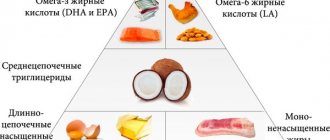07.11.2019 00:00
659
Fat, whether in foods or on the body, is a powerful source of nutrition, providing twice as much energy as carbohydrates or proteins.
Author: Tumanyan Tatevik Sergeevna
Most people only think of fats as cakes, brownies, peanut butter, french fries, and juicy bacon cuts. High blood cholesterol levels are compared to cholesterol in foods. And the fat on the sides looks like it comes from a stick of peanut butter. A high caloric status certainly does not make fat more popular.
However, fat, whether in foods or on the body, is a powerful source of nutrition, providing twice as much energy as carbohydrates or proteins. Thanks to it, it is possible to absorb fat-soluble vitamins A, D, E, K. But, it is important to clearly distinguish between healthy fats and those that harm the body.
Why are fats so important?
Fats have several important functions :
- replenish energy (1 g of fat contains 9 kcal, and 1 g of carbohydrates contains only 4 kcal)
- ensure the absorption of vitamins A, D, E and K, which are soluble in fat (fat is necessary for the body to absorb these vitamins)
- protect organs, nerves and tissues, help regulate body temperature
- every cell membrane in the body needs fat for protection as well as for the growth of new healthy cells
- fats promote the production of essential hormones in the body
- support healthy hair, skin and nails

Some fats are healthier than others . “Healthy” fats – unsaturated, monounsaturated and polyunsaturated . “Bad” fats are produced industrially, these are trans fats , and sometimes include saturated fats .
All fats have a similar structure : a chain of carbon atoms linked to hydrogen atoms. Types of fats differ in the length and type of carbohydrate chain and the number of hydrogen atoms associated with it. Small differences in structure show up in the form and function of fats.
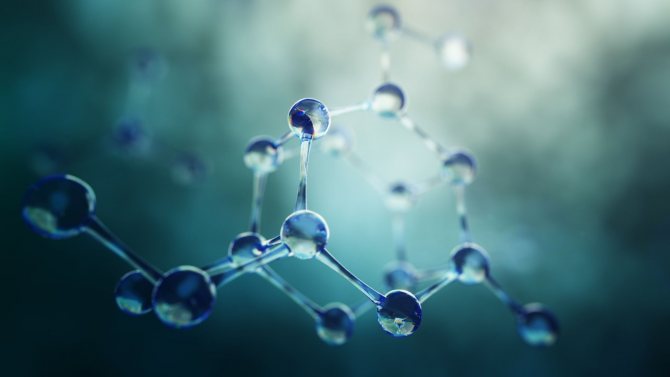
Bad fats = trans fats
The most harmful type of fats are trans fats . It is a byproduct of a process called hydrogenation, which is used to make liquid fats from healthy oils and prevent them from spoiling later. If you heat vegetable oil in the presence of hydrogen and a catalyst such as palladium, the hydrogen atoms attach to the carbon chain. This process turns the oil into a solid and helps replace healthy vegetable oils with fats that are not as healthy. "liquid vegetable fat" in the nutrition chart . At the beginning of the 20th century, trans fats were found in margarine and vegetable fats , but when large manufacturers learned to use them, they began adding them to everything from cakes and desserts to French fries.
Eating such fats increases the amount of harmful LDL cholesterol in the blood and reduces the amount of good HDL cholesterol. Trans fats cause inflammation , which is linked to heart disease, heart attack, diabetes and other chronic diseases. They cause insulin resistance, which increases the risk of developing type 2 diabetes. A study from the Harvard School of Health and other institutions found that trans fats are harmful to health even in small quantities: for every 2% of calories from trans fats consumed daily, the risk of heart disease increases by 23%.

Research has also shown that consuming trans fats can lead to diabetes . Researchers from the Harvard School of Health in Boston recommend replacing trans fats with polyunsaturated fats , which you can find in vegetable oils or fish. This can increase your chance of developing diabetes by 40% .
These fats have been shown to have no beneficial effects on our health , and there is no way to consume them safely. Since 2006, the American FDA (Food and Drug Administration) has required that trans fats be listed as a separate item on the nutrition facts table. As a result, major food manufacturers have reduced the amount of these fats in most foods , and many governments have banned the use of these fats in restaurants, thereby phasing out trans fats from consumption.
Saturated fats – are they healthy?
Saturated fats are used all over the world. At room temperature they are in a solid state. The most famous sources are red meat, milk and dairy products, cheeses, coconut oil, baked goods and more. The word “saturated” refers to the number of hydrogen atoms surrounding carbon atoms . A chain of carbon atoms that holds as many hydrogen atoms as possible is called saturated hydrogen.
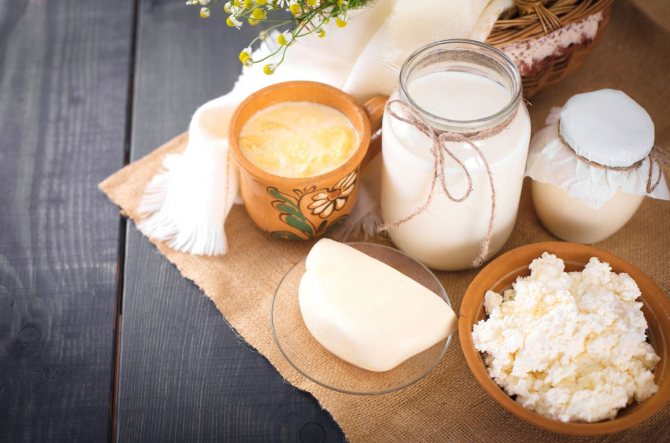
Coconut oil
Coconut oil led to lower triglyceride levels compared to butter and beef in two different studies. However, the overall conclusions about coconut oil are mixed because it does not improve triglycerides any more than unsaturated sunflower oil. And while some saturated fatty acids are linked to increased LDL cholesterol, coconut oil is a blend of the fatty acids that were found to be beneficial in the study (myristic acid and palmitic acid, which together make up about a quarter of the fats in coconut oil). Thus, coconut oil is not bad for the body and is not beneficial .

Palm oil
Studies have shown that palmitic acid, which is the main saturated fat in palm oil, has the same effect on cholesterol lipids as polyunsaturated oleic acid . In addition, palm oil contains linotinic and oleic acids and vitamin E tocotrienols , which are strong antioxidants and also inhibit cholesterol synthesis . Thus, it has been proven that palm oil also has no harmful or beneficial effects on the human body. One of the main reasons many people criticize palm oil is its negative impact on the environment. Palm oil cultivation is linked to deforestation, which leads to climate change. Also, palm plantations and their subsequent burning affect some endangered animal species found in tropical areas.
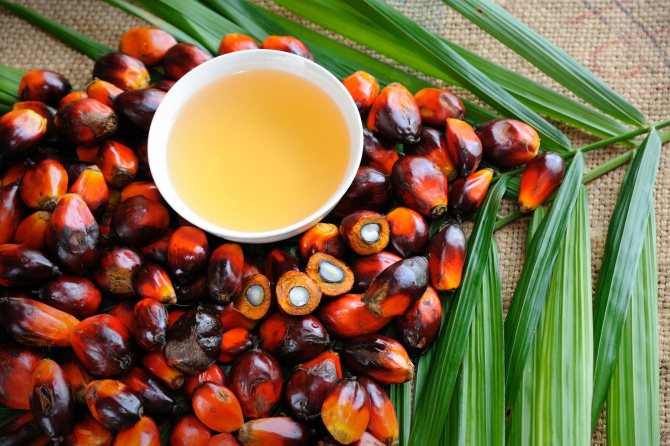
A diet high in saturated fat can cause cholesterol levels to increase and tip the balance toward harmful LDL cholesterol, which causes clogged blood vessels. This is why experts recommend limiting your intake of these fats to less than 10% of your daily caloric intake.
Recent findings point to a link between saturated fat and heart disease. One meta-analysis of 21 studies found that there was insufficient evidence to conclude that saturated fat increases the risk of heart disease, but it found that replacing saturated fat with polyunsaturated fat may reduce the risk of heart disease.

Two other studies concluded that replacing saturated fat with polyunsaturated fat, such as vegetable oils or high-fiber carbohydrates, is the best option for reducing the risk of heart disease. Conversely, replacing saturated fat with highly processed carbohydrates may have the opposite effect. What's interesting, however, is that recent analyzes of red meat and saturated fat show no evidence of a direct link to heart disease. Although saturated fats serve an important metabolic function and do not appear to be harmful or beneficial to the body, you should not consume too much of them.
Vegetable fats are more dangerous than trans fats
Spenders are terrible. However, regular vegetable oils can be even worse. In this case, the drama of the situation also lies in the fact that, unlike trans fats, the harm of which is widely known, vegetable oils are an enemy whose existence few people realize, and therefore do not think about defending against.
Of course, what has been said does not apply to all vegetable fats without exception, and you can always answer the question of which vegetable oil is the healthiest. Everything is determined by its composition, and the influence of this composition on the human body.
Healthy fats = unsaturated fats
Healthy fats are found primarily in vegetables, but are also found in nuts, seeds and fish. The difference between them and saturated fats is that they have fewer hydrogen atoms associated with the carbon chain . Healthy fats are liquid at room temperature, not solid. There are two most well-known categories of healthy fats: monounsaturated and polyunsaturated fats.
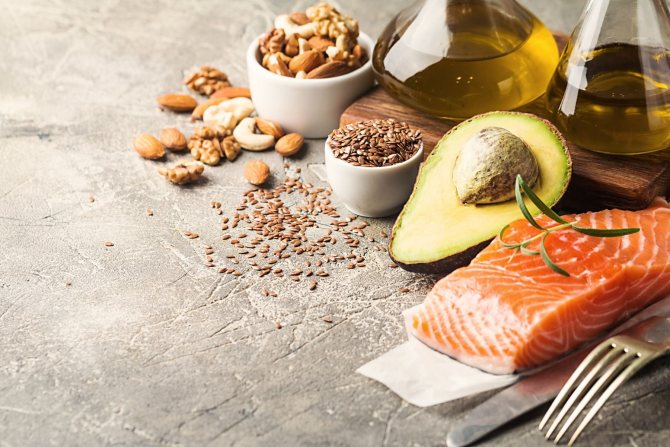
Monounsaturated fats
When you soak bread in olive oil at an Italian restaurant, you're consuming mostly monounsaturated fat . Monounsaturated fats have one double bond on their carbon atoms. This means they have 2 fewer hydrogen atoms in their chain than saturated fats. It is this structure that leaves fats in a liquid state at room temperature.
For example, olive oil, peanut butter and butter, avocados and most nuts, and sunflower oil are good sources of healthy fats.

The Seven Countries Study, conducted in 1960, concluded that monounsaturated fats may have health benefits. have been shown to be less susceptible to cardiovascular disease despite consuming high amounts of fat. The reason is that the fats in their diet are not of animal origin, as in countries where cardiovascular disease was common. Their diet mainly consists of olive oil, which contains monounsaturated fats . This fact has increased interest in this type of oil and in the Mediterranean lifestyle.
Although there is no source on recommended intake amounts for these fats, it is recommended to consume as much of them as possible along with polyunsaturated fats as a complete replacement for saturated and trans fats.
Polyunsaturated fats
Polyunsaturated fats are essential fats, which means they are necessary for the body , but the body cannot make them itself, so you must get them from food. Polyunsaturated fats in the body form cell membranes , nerve sheaths, and are also necessary for blood clotting, muscle movement and inflammation.
There are two types of polyunsaturated fats: omega-3 and omega-6 fatty acids. The numbers 3 and 6 refer to the distance between the start of the carbon chain and the first double bond. Both types are healthy . Consuming these fats reduces bad LDL cholesterol and increases total cholesterol. They also reduce triglyceride levels.
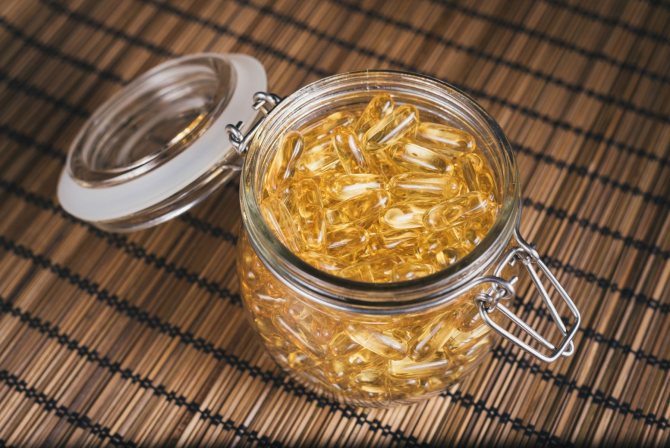
Good sources of omega-3 fatty acids include fish, which are high in fat, such as salmon, mackerel and sardines, walnuts, and other nuts and seeds.
Omega-3 fatty acids
Omega-3 fatty acids may prevent and even treat heart disease and stroke. They also lower blood pressure and increase HDL cholesterol levels. There is also evidence that they may reduce the need for corticosteroid therapy in people with rheumatoid arthritis. Studies linking omega-3s to a wide range of other health benefits, including reduced risk of dementia, are inconclusive, and some have found significant and noticeable deficiencies.
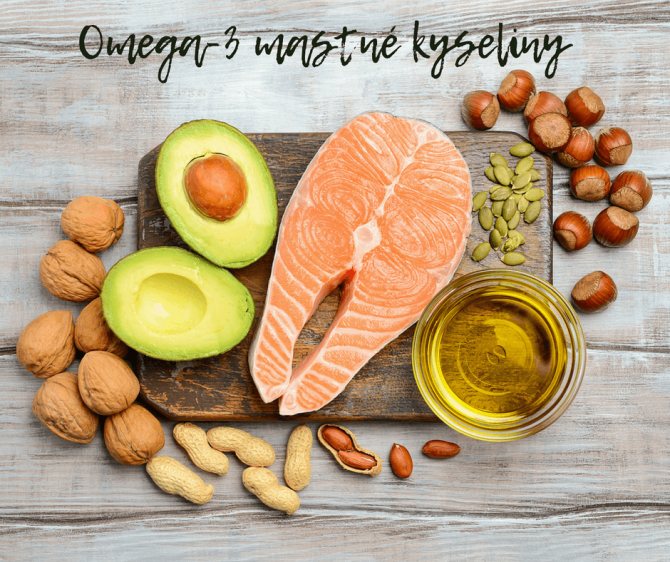
A study examining the effects of omega-3 fatty acids on vision confirmed that the acid DHA found in omega-3 fatty acids is a major component of the brain and retina. Regular use of omega-3s has been associated with a reduced risk of macular degeneration, which is one of the most common eye diseases leading to vision damage and loss.
Omega-6 fatty acids
Omega-6 fatty acids are also used to prevent heart disease . Foods rich in linoleic acid and other omega-6 fatty acids are, for example, vegetable oils such as corn, sunflower and soybean.
A study of nearly 40,000 participants across 20 different experiments found that people with higher blood levels of linoleic acid (one of the main components of omega-6) were less likely to develop type 2 diabetes than people with lower levels of the fatty acid.
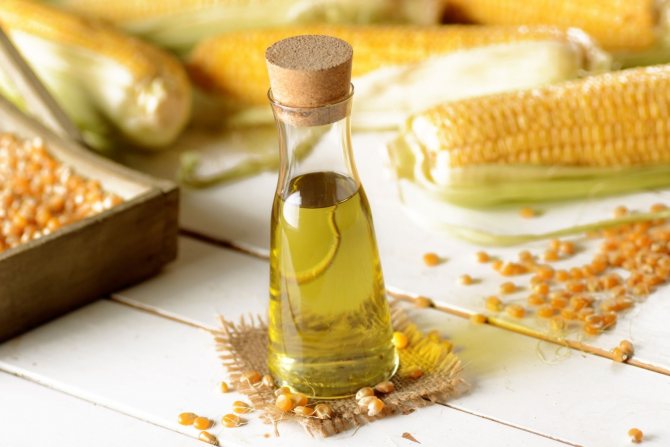
Although omega-6 appears to be beneficial, scientists from the American Heart Organization (AHA) warn that daily intake should not exceed 5-10% of total daily energy intake , as increased amounts have been linked to heart disease and inflammation.
How do you feel about fats? Do you limit their consumption or vice versa? Write us an answer in the comments and if you liked our article, be sure to share it with your friends.
Information for the public
Fats in human nutrition. Benefit and harm.
The composition of fats was first determined by French scientists M. Chevrel and M. Berthelot.
In 1811, M. Chevrel established that when a mixture of fat and water is heated in an alkaline environment, glycerin and carboxylic acids (stearic and oleic) are formed. In 1854, the chemist M. Berthelot carried out the reverse reaction and synthesized fat for the first time by heating a mixture of glycerol and carboxylic acids. Fats play a significant role in the functioning of the body. They are the second most important source of total energy from food after carbohydrates. At the same time, having the maximum caloric coefficient among energy-carrying nutrients (1 g of fat gives the body 9 kcal), fats, even in small quantities, can give the product containing them high energy value. This circumstance has not only a positive meaning, but is also the reason for the formation of a rapid excess intake of calories with a relatively small amount of food.
At the same time, the physiological role of fats is not limited to their energy function. In addition to their high calorie content, the biological value of fats is determined by the presence of fat-soluble vitamins (A, D, E) and polyunsaturated fatty acids. Vitamins A and D are found in animal fats. There are especially many of them in the liver of fish and marine animals; Vitamin E predominates in vegetable oils. Polyunsaturated fatty acids - linoleic and arachidonic - are essential, since their synthesis in the body is extremely limited. They play an important role in metabolism: their lack in nutrition negatively affects the functioning of the human body. Fats are direct sources or precursors for the formation in the body of structural components of biological membranes, steroid hormones, calciferols and regulatory cellular compounds - eicosanoids (leukotrienes, prostaglandins).
Fats used in nutrition are not chemically pure substances, but are a mixture of complex composition. In addition to the fat itself, they include protein and mucous substances, pigments, waxes, lipoids and other substances that pass into fat along with plant and animal tissues during its production. Some of them (plant pigment carotene, phosphatides) increase the nutritional value of fat, others (gossypol) are toxic substances.
Dietary fats can be divided into two groups by origin: animal and vegetable. Animal fats include cow's butter (butter and ghee), as well as beef, lamb and lard. The most common vegetable fats are olive, sunflower, corn, cottonseed and mustard oils.
The main difference between vegetable fat and animal fat is the higher content of unsaturated fatty acids (primarily oleic and linoleic). Thus, in sunflower oil the content of unsaturated fatty acids is more than 70%. Among the unsaturated fatty acids, the most important essential fatty acids, such as linoleic (omega-6) and linolenic (omega-3) acids, are separately distinguished (omega-9 acids, for example, oleic, are now also isolated).
Animal fats contain stearic and palmitic acids; unsaturated fatty acids are represented mainly by oleic, linoleic and linolenic acids. The physicochemical and chemical properties of fats are largely determined by the ratio of the saturated and unsaturated fatty acids they contain.
Animal fats are natural fats produced from adipose tissue (raw fat) or bones of some land and sea animals, as well as fish. These fats include, first of all, milk fat (presented in the form of butter and ghee), fat from birds, animals, as well as marine mammals and fish, produced in various ways.
The composition of fatty acids in animal fats varies depending on the animal, its gender, age, etc. The main difference between animal fat and vegetable fat is the higher content of saturated fatty acids (primarily stearic and palmitic).
Thus, in the fatty acid composition of butter (one of the most popular animal fats), the content of saturated fatty acids is 41-60%, unsaturated - 25-40% (including polyunsaturated fatty acids 1-3%). If we compare it with the equally popular sunflower oil, the content of saturated fatty acids in it is 5-12%, unsaturated acids - more than 70% (of which polyunsaturated fatty acids - at least 45%).
An important property of animal fats is that they are a source of many biologically active substances. Thus, animal fats are a source of lecithin, cholesterol, carotene and xanthophyll, vitamins A, E and F. Fats from the liver of marine mammals and fish contain the largest amounts of vitamin A. Milk fat (butter) additionally contains vitamins K and D.
Another not always positive aspect of animal fats is the presence of significant amounts of cholesterol. And although cholesterol never causes problems with proper nutrition (only its synthesis in the body can be many times greater than the amount of cholesterol supplied from outside), in modern conditions its consumption should be limited. Studies have been conducted in many countries that have shown that reducing the consumption of animal fats sharply reduces the risk of cardiovascular disease, so various measures are being taken to reduce the consumption of animal fats.
The benefits and harms of fats
Our body extracts many useful components from fats and uses them to transport vitamins, so we cannot do without fats. But which fats are good and which are bad?
Good fats are natural fats. But now these fats are often forced to change their natural state by heating them, hydrogenating them, refining them, and so on. Butter is still an excellent source of natural and healthy fats.
Many scientists classify animal fats as harmful, but this is not entirely true. Fats from animals raised on farms, on antibiotics and hormones, are harmful. Hydrogenated fats are also harmful; they contain a type of fat that is not saturated or unsaturated. They are called trans fatty acids. For food manufacturers, hydrogenated fats are a very profitable product. They are much cheaper than natural fats and last much longer. Of course, products that contain hydrogenated fats or are cooked with such fats also have a much longer shelf life. For our arteries, trans fatty acids are the same as saturated fats.
Studies in the field of nutrition indicate that these acids help increase cholesterol levels in the blood. Trans fatty acids are found in large quantities in cookies and donuts, French fries, pies and other baked goods, well-fried fish, fried potatoes, potato chips, corn flakes, sauces, candies, artificial cream, some types of ready-made cereals, and margarine.
Simple recommendations
- It is recommended to consume no more than 25-35% fat of your total daily calories (depending on your goals).
- Try to keep your saturated fat levels around 10% and eliminate trans fats from your regular diet.
- Quality sources of fats are: fish, nuts, vegetable and coconut oils, avocados, flax seeds, and cheeses.
- The recommended dose for Omega-3 is approximately 1.5-1.8 grams per day, which can reduce the risk of heart disease.
It is advisable to reduce the consumption of saturated fats, their amount should not exceed 10 percent, monounsaturated 15 percent and polyunsaturated 10 percent, as well as get rid of trans fats or at least limit their consumption to 2-3%.







